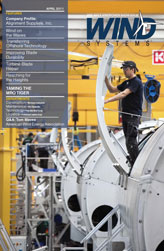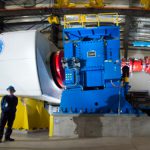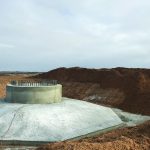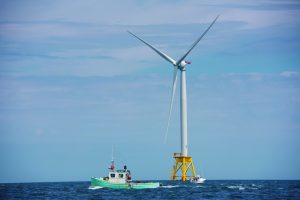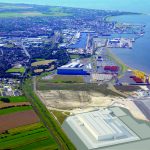It is no secret that the new class of wind turbine designs is challenging the limits of transportation logistics. Not only are the nacelles becoming heavier, but blades and tower sections are becoming larger and longer. Many highway jurisdictions are restricting the movements of large components and sometimes will deny permit applications if alternative forms of transport are possible. In this environment it is critical that component manufacturers understand how to use rail as an alternative, economical, and viable transport mode.
Rail Parameters
Rail is a specialized service that requires more planning than traditional “over the road” transportation, but the potential payoffs in both cost and service may well be worth the effort. Unlike truck transport, rail can accommodate heavier loads with fewer problems. In addition, there is no need to obtain permits on a state-to-state basis. Clearances are required, but the cost is generally less than truck permits, and no police or private escorts are needed during the rail shipment.
Perhaps the greatest limitation of rail clearances is the allowable component width. In combination with width, the center of gravity is one of the most important measurements for rail movements. Any offset from center of gravity will impact the effective width of the component and needs to be carefully considered in the overall clearance.
Length is also a key parameter for tower sections and blades. The most common load configuration for current blades is two blades loaded on three flat cars. As the length of components increases to over 50 meters, the radius of the curvature of the track and component must be evaluated.
A key consideration for a rail program is the accessibility of manufacturers to rail loading locations. Many larger OEMs such as Siemens, GE, and Vestas have built rail spurs directly into their manufacturing plants and are well positioned to take advantage of rail transportation. Other turbine manufacturers and components suppliers for blades and tower sections do not have easy access to loading locations. The economic viability of using rail from certain source locations needs to be determined on a case-by-case basis.
Rail Design
The first step to developing a quality rail program is reviewing detailed drawings of components to determine clearance potential. Dimensions, weight, and center of gravity information is considered in this analysis. Using this information, the most suitable rail car is selected based on car design capacity and market availability. Rail experts will determine the load configuration for the car type, including identifying the number of components to be loaded per rail car. Next, a rail securement concept is developed in accordance with AAR (Association of American Railroads) open-top loading rules. This includes determination of proper placement of the component on the rail car, planning the proper vertical, lateral and longitudinal securement. Special fixtures may need to be designed, or the component may be loaded directly onto the rail car. Finally, all standard operating procedures should be developed for the safe transfer the component onto and off of the rail car.
Rail Shipment
Once clearance is obtained the car is ordered, placed, and loaded. Before the railroad pulls the loaded car they inspect it to ensure that the loaded measurements comply with the approved clearance. One can monitor the movement of the car and install impact and GPS recorders to document any movement of the load during the rail transportation. This data can be used by the manufacturer in future designs. Each railroad inspects dimensional shipments as the cars move to destination in order to make sure the load has not shifted during movement.
Once a rail concept plan is developed a shipper may entertain conducting a “live” to see how the component performs during an actual rail shipment, at the same time gathering key data points. Finally, the rail plan should be thoroughly documented for future shipment execution. Rail options allow flexibility and potentially economic advantages, but it is important to plan appropriately. With some upfront work, manufacturers will save in the long run.
















